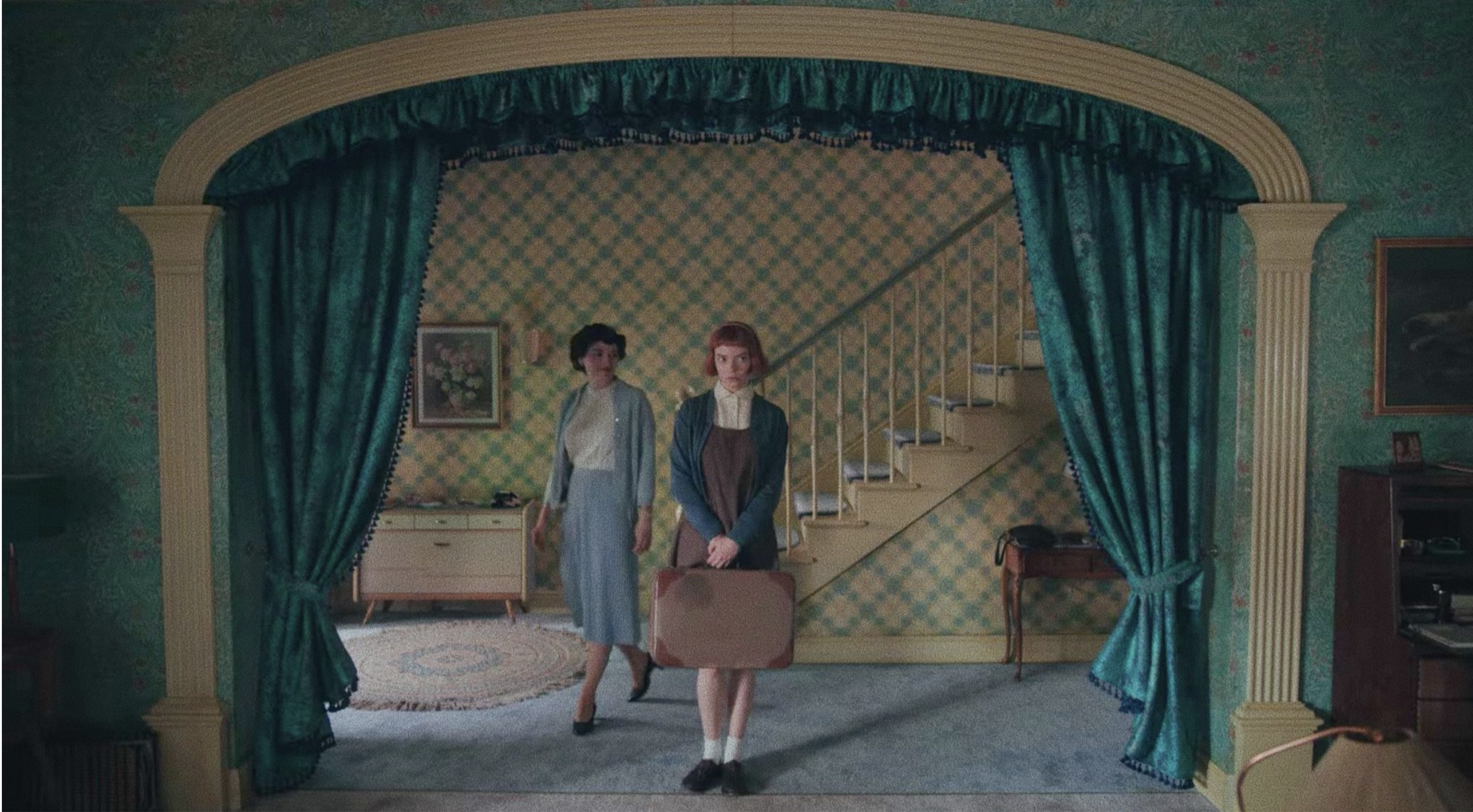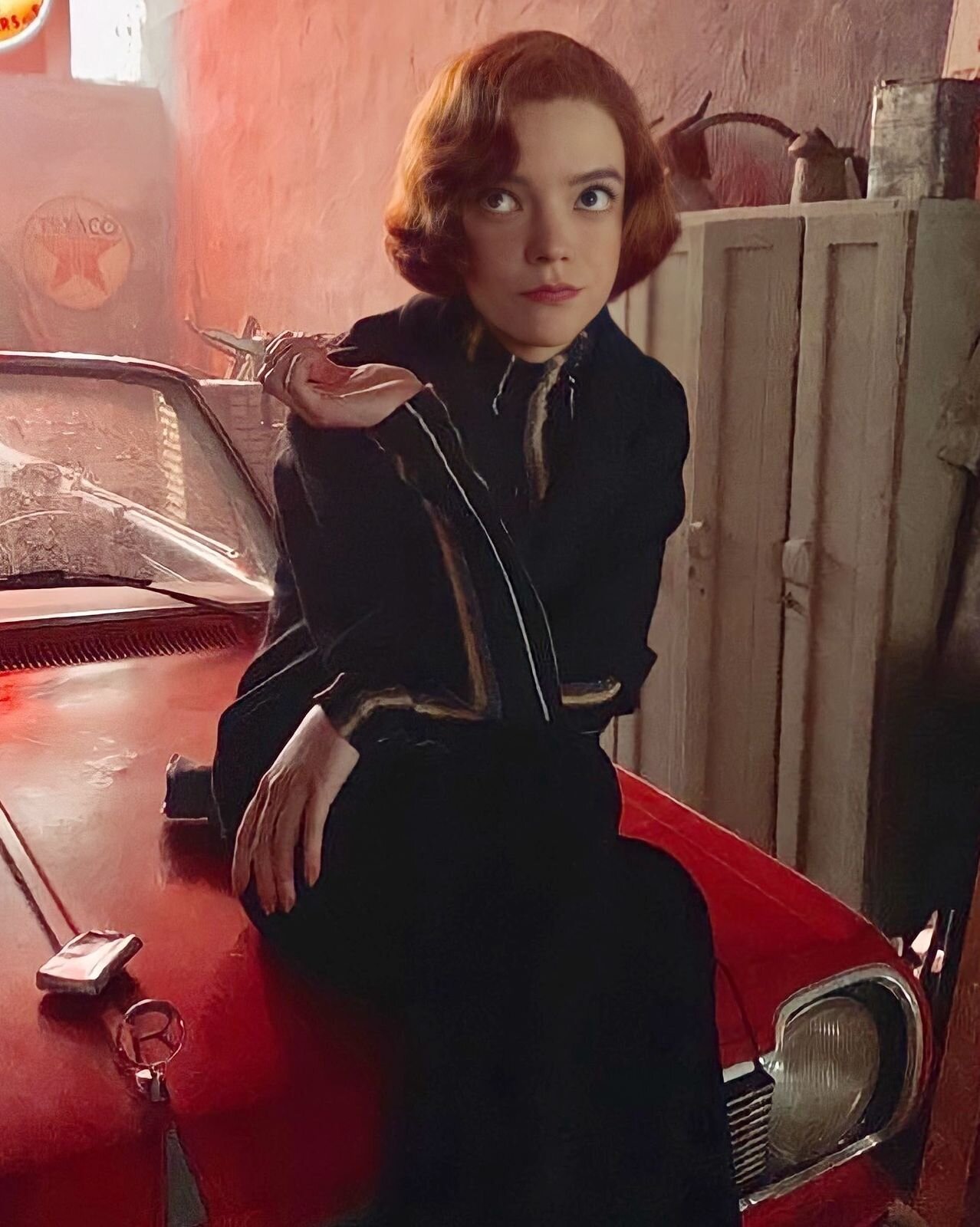On Gucci and Greatness: The Queen's Gambit
It’s incredibly unlikely you’ve made it this far into December without hearing the buzz about The Queen’s Gambit. Sixty-eight million Netflix accounts have watched it, making the show Netflix’s most popular limited series of all time.
Reading the synopsis, it’s easy to question how The Queen’s Gambit even became a hit in the first place. The show centers around the world of competitive chess, which doesn’t boast the drama-filled sex, crime, and mystery of other successful TV shows. Anya Taylor-Joy (of Split and Emma fame) stars as Beth Harmon and is a talented actress, but she certainly doesn’t carry enough name recognition to bring in many viewers. And unlike seemingly 99% of movies these days, The Queen’s Gambit is not attached to any current franchise but is instead based on Walter Tevis’s novel of the same name.
However, once you move past the synopsis and actually watch the thing, all questions on the merits of The Queen’s Gambit’s popularity are immediately answered. In a time that we have all been ordered to lock down (again) and watch patiently as the world burns, nothing is more popular than media that can genuinely get our minds off things. For the span of eight one-hour long episodes, The Queen’s Gambit managed to push my focus away from the state of my student loans in the crumbling economy, the safety of my sister as a doctor, and the health of my loved ones. And for that, I love it.
No matter what you need to distract you right now, The Queen’s Gambit has it all. If all you want are some high stakes to care about that won’t actually impact your life, you’ll be swayed by the power of Scott Frank’s screenplay, which somehow makes individual chess moves feel masterfully suspenseful. If you want Greek-style tragedy, you’ll find plenty of it in the seams of each episode. Fair warning: The Queen’s Gambit deals with familial death, drug use, and alcoholism. These heavy moments are woven seamlessly into the script as Anya Taylor-Joy does some of her finest work in the subtle glances she gives pill bottles when she’s trying to stay on the wagon, or in the single tear she sheds while toasting a recently deceased loved one. And, if all you really want is a well-written romance to remind you that sex and charm aren’t dead, please give it a watch. The sexual tension is subtle but palpable, and in a time of Tinder bros and risky hometown hookups, perhaps nothing is sexier than raw, in-person chemistry. I’ve never been more invested in hair touches before in my entire life.
And if your brain is too scrambled to even handle a plot right now, I get it. Even so, watch The Queen’s Gambit solely so you can scroll on your phone and look up to catch the costumes. The show is absolutely gorgeous; from the clothes to the actors, it’s nice to exist in a space where apparently everyone and everything is beautiful. Anya Taylor-Joy has the face of a porcelain doll, and the show goes to great lengths to prove that brilliance and femininity are not antithetical; Beth purposefully dresses beautifully, and it is a pleasure to look at the trove of ‘60s flare skirts and tea dresses she buys with her tournament winnings. Beyond the clothes, the show’s set design is grand and flowing. The plot jumps between Kentucky and Mexico City and Paris and Moscow, and if quarantine part two has you feeling trapped, you can at least escape into Beth Harmon’s travels.
It’s easy to dig into Beth’s clothing choices and come out with some genuinely interesting feminist critique. Beth is truly, genuinely excellent in a way few TV characters are. The decision to make her decidedly feminine is an exciting one, given the tired trope of female excellence somehow stemming from internal masculinity. Beth sits with her legs crossed, wears a lot of lipstick, and always has her nails done. Several plot points in the show center around her fighting to earn enough money to make all of this possible after a childhood spent feeling like an ugly outcast, and her sartorial choices never change; even at her lowest, even at home, she’s cute. Perhaps it’s unrealistic to the female experiences, and I do wish that women were ever allowed to be ugly on screen, but I still appreciate the implication that time spent honoring femininity does not in any way detract from a person’s absolute excellence.
In the femininity point and elsewhere, Beth’s sheer excellence is used as a catch-all solution. When people are misogynistic, it doesn’t really matter. Beth is so good she can do what she wants. When she meets a female friend for a drink and wakes up next to her in bed, no one makes a big deal of this ‘60s display of bisexuality. Beth is so talented she even manages to transcend the racial tensions typically seen in interracial interations of the era, as the show’s sole Black character, Jolene, supports Beth’s career when even Beth can’t manage to.
The last note should be a sticking point, since no show these days should ever really have an (almost) all-white cast. If The Queen’s Gambit pretends that sexism was dead in the ‘60s, they could also pretend that racism was dead too and include dynamic BIPOC characters. In addition, the Black savior trope is tired and dead. Why did Jolene have to save Beth, instead of focusing on herself? It’s here that The Queen’s Gambit falls flat, and I’m sure some viewers will find it impossible to get over the show’s poor handling of whiteness. Jolene is most definitely a powerful character, and she helps Beth again and again; still, it’s hard to watch the show and not consider what Jolene could have done if she had the same guidance and privilege that Beth garnered through classical pretty whiteness. The show never acknowledges this difference. All too often, Black women in America are socially pressured to uplift everyone else while never receiving the same treatment in return, and I am disappointed that The Queen’s Gambit continued such a pitiful pattern.
I held these warring ideas in my mind as I watched the whole show. For one, I (and a lot of Covengirls) pride myself on striving for greatness, and it’s been hard moving through 2020’s many challenges while holding myself to that absurdly high standards. To that end, it was so good to watch a girl be simply better than everyone else. It is pleasurable to watch people do what you want to do, and in that way, The Queen’s Gambit is like a nerd’s Gossip Girl. Beth is pretty, well-dressed, and extremely inherently talented. The show is entirely based around her greatness, her prodigy, her position as the very best. I watched and felt a part of me awaken that had been asleep for most of 2020.
But also, Beth is great and white. She is helped, again and again, by people who would not give her the time of day if she was not so pretty and thin and white. It is hard to watch and not think about the kids with Beth Harmon levels of talent who lack the money or resources or cultural acceptance to use it. Obviously, no media can completely account for a character’s privilege, but my love affair with the show’s aesthetic and sexiness and plot kept getting broken up by cognitive dissonance.
Then again, my love for most things gets broken up by my knowledge of its flaws. It’s a horrible year, and as long as you acknowledge the reality of privilege in the U.S. after you watch, feel free to turn your brain off and enjoy macro shots of Anya Taylor-Joy’s hands. So few things are around to give us joy one of these days, and for what it’s worth, I genuinely think The Queen’s Gambit is one of them.
By Anna Muthalaly
Current female health advocate, over-analyzer, and Duke Student





